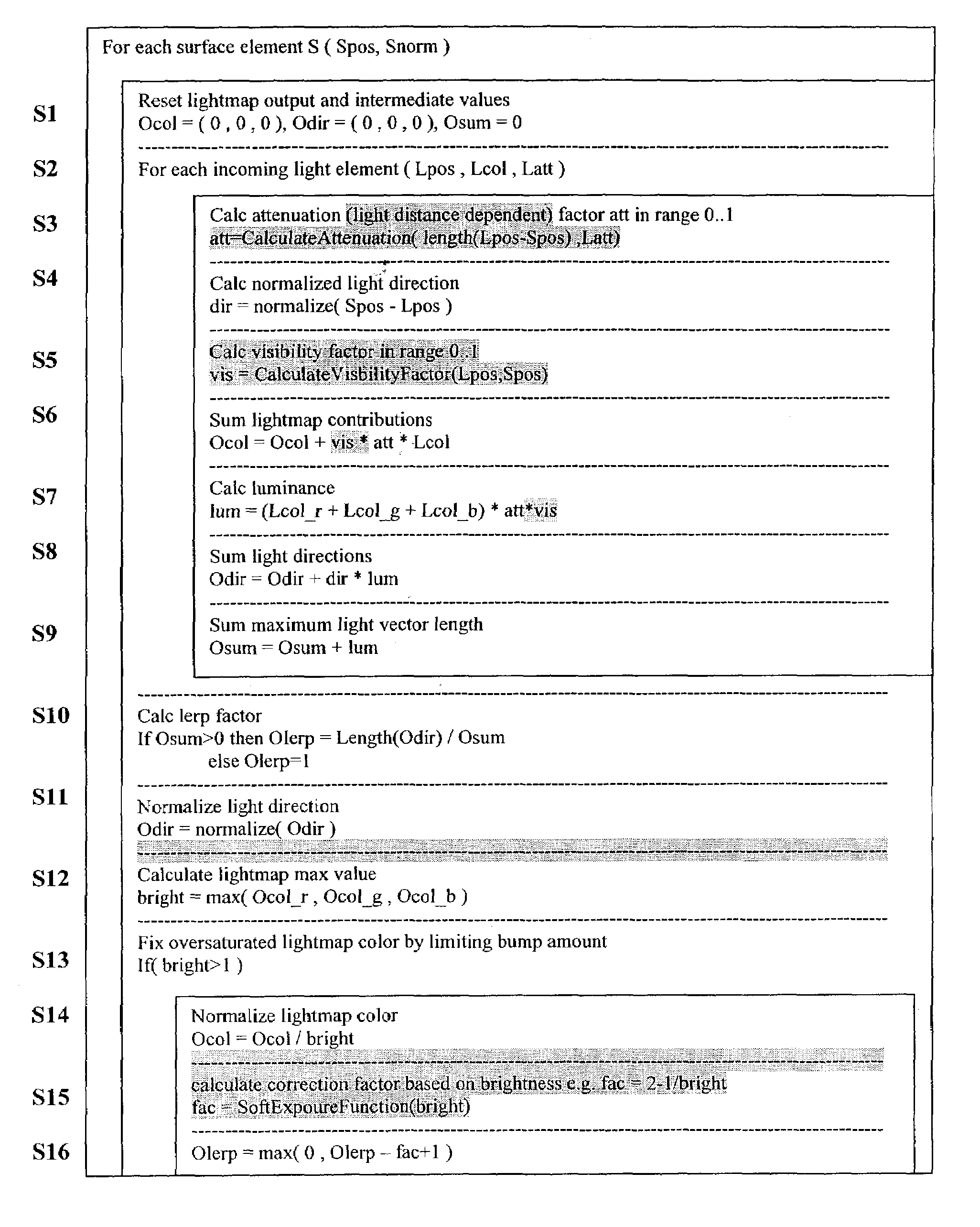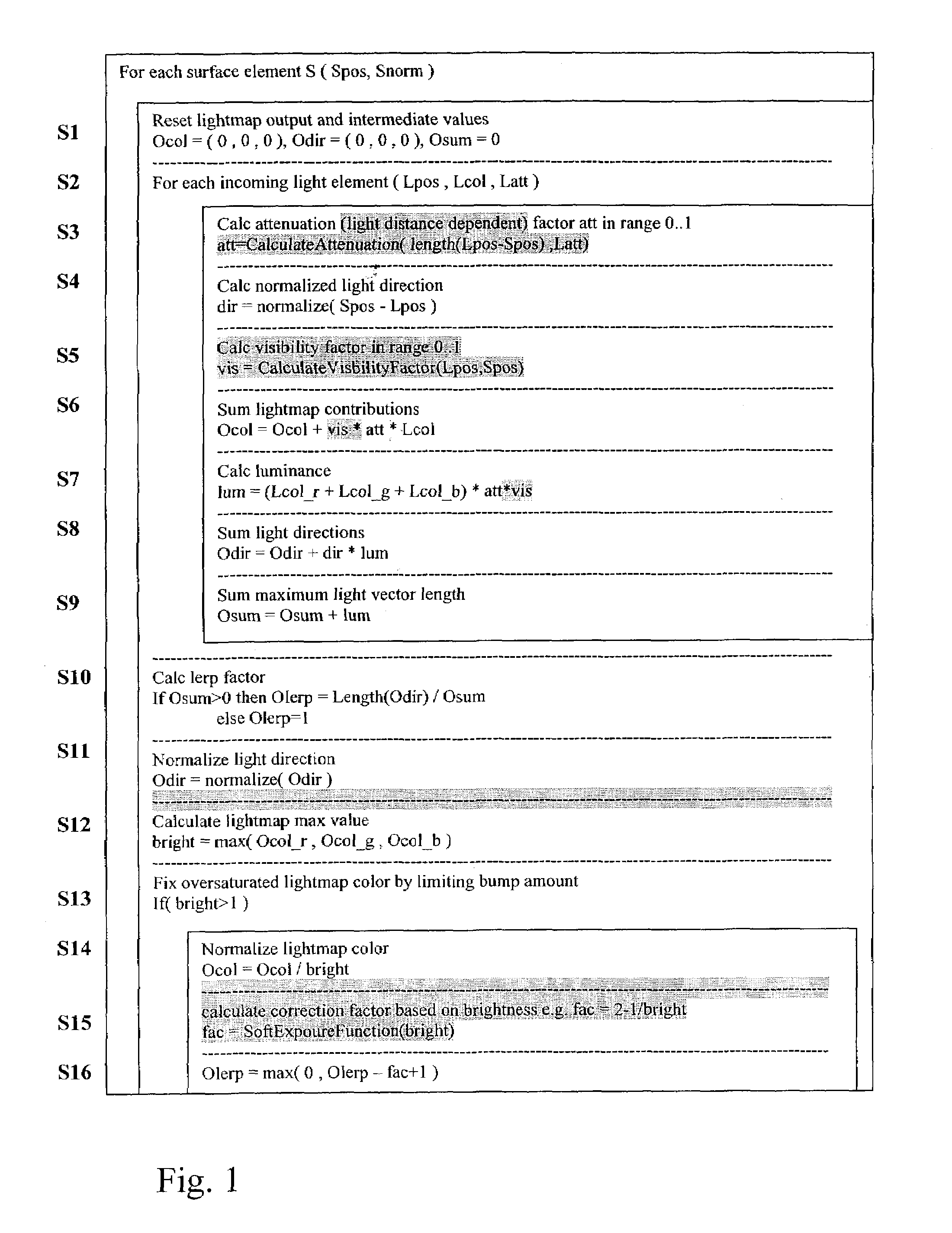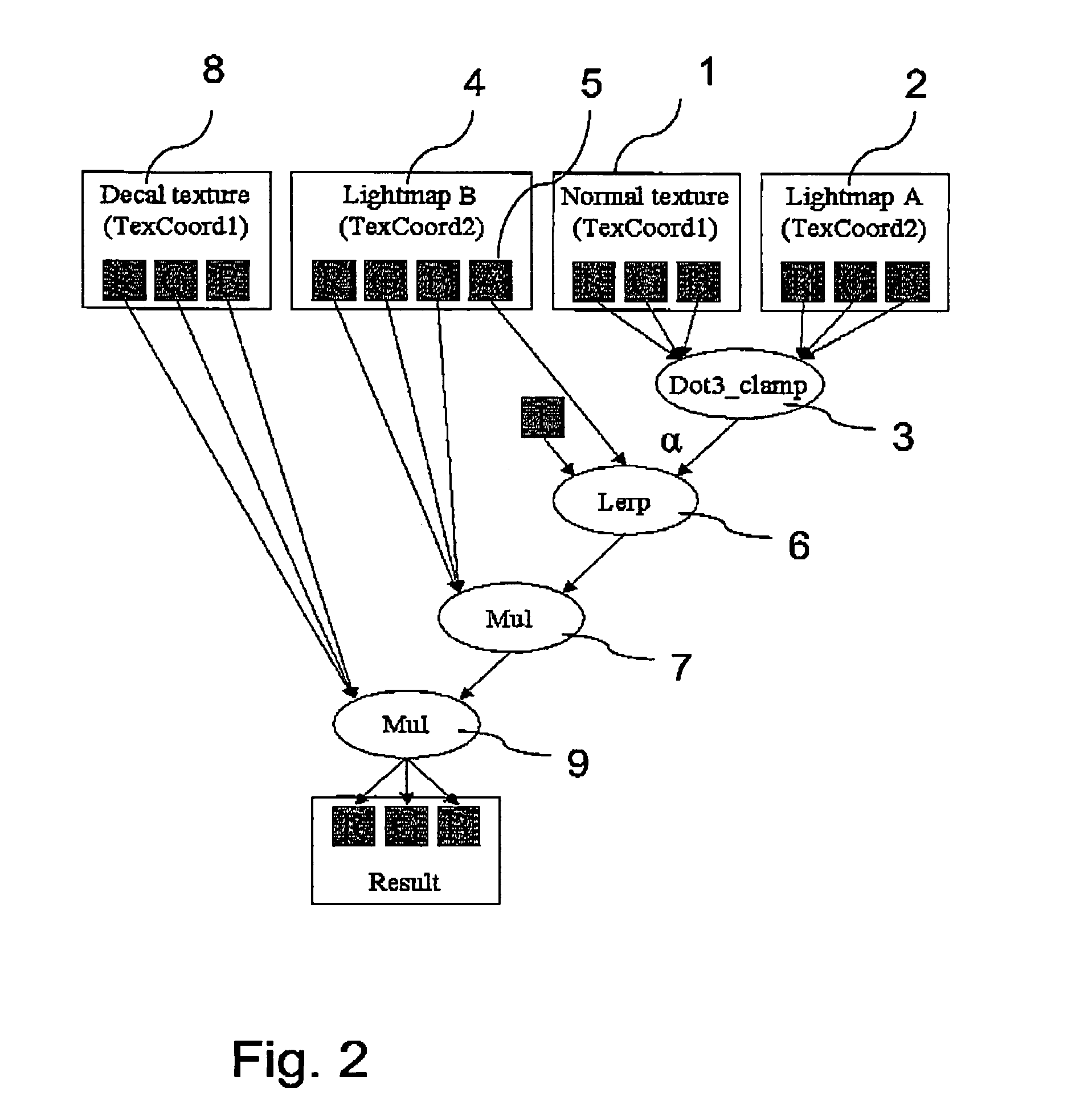Method and computer program product for lighting a computer graphics image and a computer
a computer and graphics image technology, applied in the field of computer program products for lighting a computer graphics image, can solve the problems of increasing the apparent complexity of the surface, increasing the complexity and total computing time required for the rendering process, and increasing the complexity of the required rotation matrices. achieve the effect of improving the realism of the computer graphics image, avoiding image areas, and high efficiency
- Summary
- Abstract
- Description
- Claims
- Application Information
AI Technical Summary
Benefits of technology
Problems solved by technology
Method used
Image
Examples
first embodiment
[0046]In the following a preferred example of a method according to a first embodiment of the present invention will be described with reference to FIG. 1. The process according to FIG. 1 is performed preferably as a pre-process, i.e. a procedure of pre-calculating, for compressing a complex lighting condition of a diffuse material. It is assumed that the object surface in the computer graphics image is illuminated by at least two light sources positioned at different positions in a three-dimensional space. From these light sources a subset of light sources is selected that are apt to illuminate the respective surface element to be processed and rendered. Hence, if objects are present in the light path between a respective light source and the surface element to be processed, such a light source is not necessarily taken into account for computing the complex lighting situation. Instead, such a light source can be neglected. A further example for selecting a subset of light sources a...
second embodiment
[0080]According to the first embodiment, the result of the approximation according to FIG. 2, which expressed in a compressed manner a complex lighting situation, is stored in two texture maps. The present invention is, however, not limited on such a storing scheme but may be implemented in a different manner.
[0081]Merely for illustrative purposes, in the following the basic principles of a second embodiment will be described. In the following it is assumed that the process of pre-calculating the complex lighting situation is performed in a substantially identical manner as the process described with reference to FIG. 1. However, according to the second embodiment the output of the above process of pre-calculating, namely the approximated light color, the approximated light direction and the blend factor between the lightmap and the high-resolution surface texture, is stored instead in vertex components of polygons building up the object surface to be rendered in three-dimensional s...
third embodiment
[0084]While the above process has been described with reference to pre-calculating complex lighting conditions in case of diffuse lighting, the present invention is by no way limited to pre-calculating diffuse lighting conditions. Instead, according to a third embodiment, which will be described in the following and may be combined with any of the other embodiments described in the specification, also complex lighting situations including specular reflection of light emanating from one or more light sources and being reflected by an object surface may be pre-calculated.
[0085]In addition to the above process of pre-calculating, for every stored light source the normalized light direction calculated in step S4 of the process according to FIG. 1 is used to calculate the half-angle vector (direction where the highlight is located) by normalizing the sum of the normalized light direction and the normalized eye direction.
[0086]For approximating the lighting situation a weight factor for w...
PUM
 Login to View More
Login to View More Abstract
Description
Claims
Application Information
 Login to View More
Login to View More - R&D
- Intellectual Property
- Life Sciences
- Materials
- Tech Scout
- Unparalleled Data Quality
- Higher Quality Content
- 60% Fewer Hallucinations
Browse by: Latest US Patents, China's latest patents, Technical Efficacy Thesaurus, Application Domain, Technology Topic, Popular Technical Reports.
© 2025 PatSnap. All rights reserved.Legal|Privacy policy|Modern Slavery Act Transparency Statement|Sitemap|About US| Contact US: help@patsnap.com



